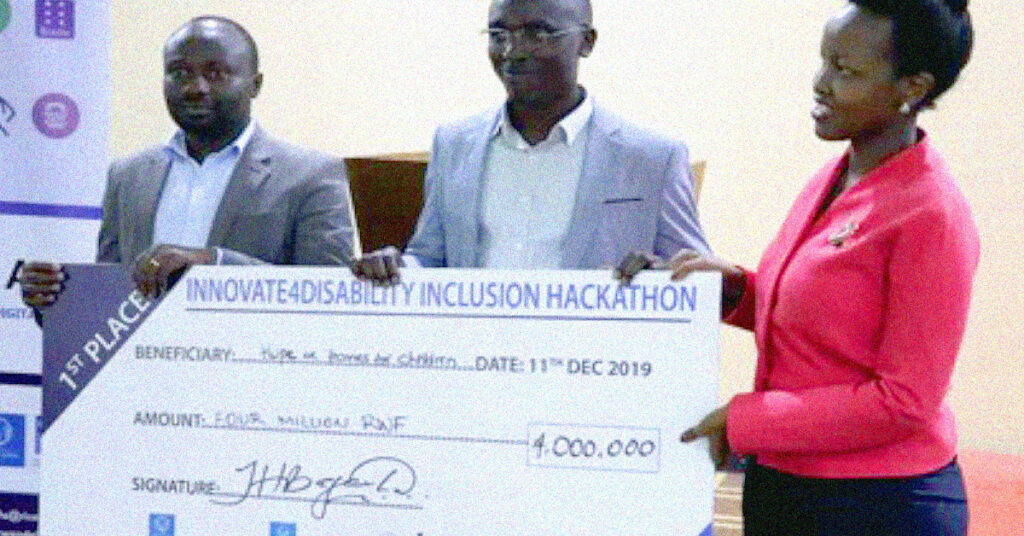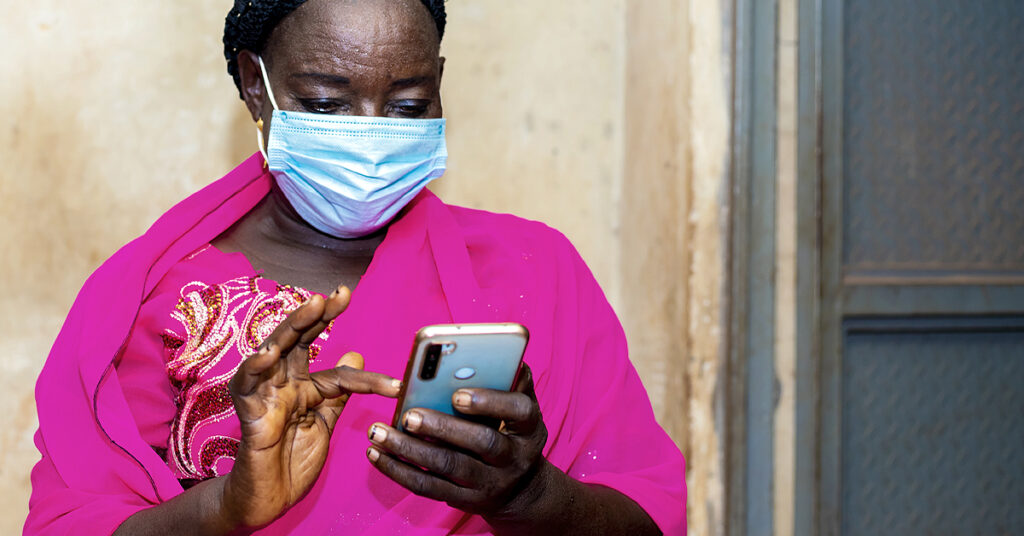Our pioneering ‘No Child Left Behind’ project was completed in March 2021. In its spirit, we’re taking the next innovative step to reach children with disabilities.
In this blog post, Innocent Habimfura, Regional Director for East and Southern Africa, explains how SMS technology has revolutionised finding and supporting children with disabilities. This technology was piloted in both Rwanda and Uganda with help from the UK Aid Match programme.
It is a great injustice that children with disabilities are still subject to stigmatisation and discrimination. They are often perceived as bringing shame on families. So instead of seeking support, many families hide their disabled children away.
The problem: locating disabled children
It is vital to successfully locate children with disabilities, to ensure they and their families receive the support they need. This has been particularly challenging in remote, hard to reach communities.
The National Council of Persons with Disabilities (NCPD) and local authorities should have a constantly updating record of children with disabilities so they can then plan for and provide appropriate support. But this wasn’t happening. Although it’s likely that someone in the neighbourhood knows that a child with disabilities is hidden away, they previously had no way to inform the right authorities at no cost.
“Although it’s likely that someone in the neighbourhood knows that a child with disabilities is hidden away, they previously had no way to inform the right authorities at no cost.”
The solution: SMS technology
This is where the pilot of SMS (Short Message Service) technology in three districts has been so successful. SMS has been an effective way to report a child with disabilities facing protection concerns, as it allows anyone to send a free message to many service providers at the same time.
This then enables numerous organisations to take action in a more co-ordinated way. As a web-based application, it has encouraged information sharing, monitoring and referral of delicate cases.
Clearly there are many benefits, as SMS allows cost-effective two-way communication. A standard message can be sent to many organisations and individuals, a kind of top down approach. Aline, our Social Worker, told me: “It’s been practical to send SMS to targeted local authorities and community volunteers. We’ve been able to raise awareness on the rights of people with disabilities, to promote behaviour change.”
Conversely, messages can be sent from community volunteers to local authorities—an effective bottom-up approach. This has been particularly beneficial, as one NCPD staff member at district level told me:
“The SMS technology means we now have children and people with disabilities coming to us each and every day. We are discovering new people with complex needs. I used to be brought here and there to support other departments but now I provide all my time. Rather than working on a set of activities, I have to respond to demand rising from the ground. I feel proud to serve the real people in need.”
NCPD Staff member
Planning the cost of support for children with disabilities
With an increased number of children with disabilities becoming known to the local authorities, the budget allocated to support them can be informed by empirical, real demands.
The Executive Secretary of the NCPD explains: “This technology is the kind of solution we need. SMS tells us about a family or a person with disabilities and we can provide tangible solutions to them.
For the first time, there’s a tool that gathers enough information for accurate future planning rather than basing plans on imagination or biased estimation. With scarce resources, we are able to prioritise those with pressing needs. We have enough details to refer the case to a partner or service provider in the district, who can then design a specific intervention to empower the family or make the individual more resilient. It is about real life.”
Supporting families keeps children with disabilities safe at home
While the needs around disabilities are complex, we can record the data sent by communities on the SMS database. By analysing this data, our teams can then make recommendations and provide guidance to our partners on anything from health, education and shelter, to reintegration in communities and the provision of assistive devices such as wheelchairs. In this way we can address children’s needs and make a positive impact for families and communities.
“SMS data enables us to address children’s needs and make a positive impact for families and communities.”
Keeping everyone safe during COVID
There were other, unexpected benefits of the SMS technology too. Throughout the Covid pandemic, we’ve been sending messages to community volunteers on prevention measures, helping to combat the spread of disease. This was particularly important for vulnerable members of the community, including those with disabilities.
Now that we’ve successfully piloted SMS technology in three districts, several partners from Civil Society or government have asked how and when we can scale up to reach all 30 districts of Rwanda. Interest only keeps growing and now we must raise more funds to scale up in the remaining 27 districts.
As I claimed in my last blog post, when families have the right support, they make the greatest positive impact in the lives of children.



